Cape Cod Times
By Brian Bushard
I&M Staff Writer
Posted Apr 7, 2019 at 10:25 PM
Updated Apr 8, 2019 at 6:13 AM
Are scalloping’s days numbered on Nantucket?
“Guys that scallop to the end are your veterans, your die-hards, guys who are out there. That’s their business.”
NANTUCKET — Nantucket bay scalloping is a dying profession, town shellfish constable J.C. Johnson said this week, just days after commercial scalloping season came to a close.
Fishermen brought in 13,000 bushels of scallops last season. That number was down by 10,000 bushels this year to around 3,000, making the season’s harvest one of the lowest ever, Johnson said.
Along with the decreased harvest size, the fleet itself is aging, with only a handful of young scallopers now fishing.
“We have a couple younger guys going out, but your veteran guys, Bill Spencer, Herkey Stojak, all those guys who have been scalloping for years are almost done, so what’s going to happen if you don’t have their kids following suit?” he asked.
“Guys that scallop to the end are your veterans, your die-hards, guys who are out there. That’s their business,” he said.
Carl Sjolund has been scalloping off Madaket for the past 50 years. He usually fishes the entire season. This year, however, he pulled his boat midway through January. Even though there were no serious nor’easters or major freeze-ups, he simply was not seeing any adult scallops.
Fish markets were paying scallopers $18 to $22 per pound this year. Last year that price was $12 to $15. Sjolund said the price difference was the incentive to fish this season.
Retail prices at fish markets began at $19 to $23 early in the season. As the season came to a close, the price had gone up to $40.
Blair Perkins did not stick around on the water this year, either. Just a week into the season, he was struggling to reach his limit of five bushels. He took his boat out of Madaket Harbor just 10 days into November. His season was over.
“The days of guys going out, making a living scalloping, are over,” Perkins said. “You would be foolish not to have other work to fall back on.”
In the summer Perkins leads whale watches and cruises with Shearwater Excursions.
“I tested out all over the harbor and all over Madaket Harbor, and I was really discouraged with what I saw, it was mostly seeds (immature scallops),” he said. “It’s really rare to see adult scallops.”
Part of the reason behind that, he said, is because many scallopers take nubs, adult scallops with smaller muscles but a normal-sized shell. The town and the state Division of Marine Fisheries, in 2008, came up with an agreement to allow scallops with a growth ring of 2.5 inches to be harvested.
“The enforcement guys have a hard time trying to get these guys who are taking illegal scallops,” Perkins said.
“It’s so frustrating when we’re so used to taking what we know to be adults and leaving what we knew to be seed. Now there’s such a gray area.”
Natural Resources Department Director Jeff Carlson attributed the dwindling number of scallops to a decline in eelgrass, the underwater plant scallops cling to, to avoid being eaten by predators like crabs.
Carlson remembers seeing scallopers fish off 40th Pole Beach, where there used to be healthy eelgrass beds. Eelgrass used to fill the seafloor from Madaket Harbor to Eel Point, but now, he said, it is virtually nonexistent.
“That population of eelgrass (north of Dionis) has substantially declined in the last decade,” Perkins said. “It’s patchy at best now. It’s not as much a water-quality issue, but there’s been a lot of sediment mixed, and a lot of shoaling.”
Water quality plays a much larger role in Nantucket Harbor, he said, which is reflected in the number of fishing boats he typically sees on the water on a mild winter day.
This year, he would see no more than three boats on a good day. When the scallop yield is low as early as November, the desire to fish goes down with it, he said.
Perkins tested the waters in Nantucket Harbor a couple days this season. It was clouded with algae, he said. He worried that too much algae in the harbor would prevent eelgrass from growing back.
“It’s such a frustrating industry right now,” he said. “Until we deal with water quality, it’s not going to come back. We need to get really serious about water quality. There’s too much fertilizer going into the harbor.”
The Nantucket Land Council, in October, re-started a program to plant eelgrass in a sandy stretch of seafloor off Quaise as well.
Having healthy eelgrass will not prevent year-to-year fluctuations in the number of scallops, Carlson said. But he hoped it would help to increase the number of scallops overall.
“When we look at water quality and habitat health, we want to get to the point where, instead of steady decline, that population is leveling off and even increasing,” he said.
“Then, when you have these fluctuations, it’s not going down to 2,000 or 3,000 bushels. Hopefully you’re looking at 25,000 and 15,000 bushels.”
Are scalloping’s days numbered on Nantucket? – Cape Cod Times
